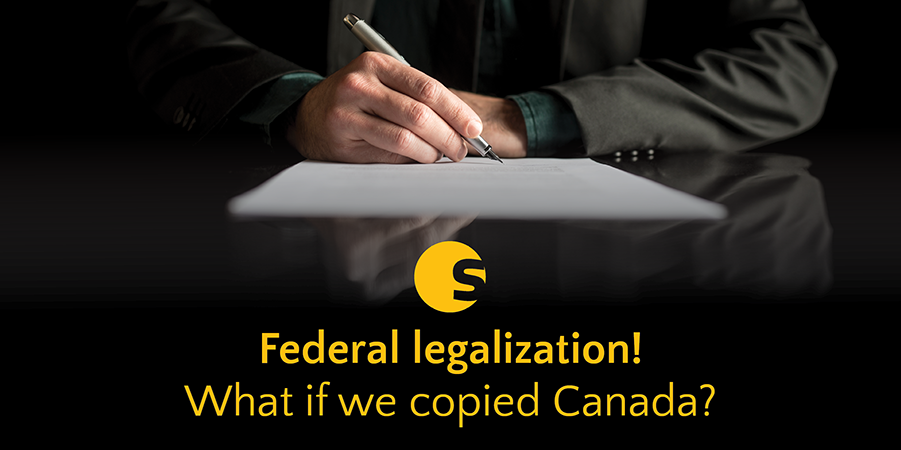As many know, our neighbors to the north recently legalized cannabis nationwide. However, many don’t know exactly how their system works, or how it would look if applied to the United States. We’ve already looked at what federal legalization in the US might look like, so here we’ll take a deep dive into the Canadian system and how a similar system would look like here in the US.
The three-tier system
With federal legalization, Canada now has a three-tier system for regulating cannabis. The majority of regulatory authority is held at the federal level. Most of the authority is held by Health Canada (HC), while taxes and fees are handled by the Canada Revenue Agency (CRA). Under the CRA, any business that grows, produces, or packages cannabis must obtain a cannabis license. Additionally, businesses that package cannabis are required to register with the Cannabis Stamping Regime. Under HC, licenses are divided into cultivation, processing, testing, sale for medical purposes, and research. The cultivation and processing licenses are also broken down into microcultivation, standard cultivation, and nursery licenses and microprocessing and standard processing, respectively.


States vs. Territories
I know what you’re thinking. I thought they legalized recreational use? Where are the recreational sales licenses? Don’t worry, those are handled by the provinces and territories. Provinces and territories have the authority to set the methods of recreational sales as well as the age required for purchases. Some provinces and territories have state-operated retail stores while some allow privately run retail stores. Additionally, they can vary on if delivery orders are allowed and how those orders are placed. For example, Nunavut only allows sales by government-operated online stores or by phone, while Alberta allows sales by privately-operated stores and online. As for the age to purchase, most enforce an 18 or older standard, while some opt for a more restrictive 19 and up.
Finally, there are the local level regulations. Unlike in most legalized states, localities have relatively low regulatory authority over cannabis businesses. They cannot zone cannabis businesses differently than other business of a similar type, but all normal zoning and building codes apply. Although they cannot zone cannabis businesses differently, localities still retain the power to ban cannabis businesses outright. Local powers also vary between the provinces and territories but are relatively limited regardless of their location.
What if we copy-pasted Canada’s federal legalization system?

Now, the question you’ve been waiting for, how might this look in the US? In the US, it would likely mean that licensing at the federal level would be handled by the Department of Health, while taxes and fees would be handled by the IRS. The federal government would be in charge of the bulk of regulations, such as testing, packaging, and labeling. Unlike Canada, however, the minimum age would likely be set by the federal government like it is with alcohol. Then states would handle the actual retail market. Similar to alcohol sales in the US, states would likely allow private retailers, although some states who already run government liquor stores might opt for government-run stores.
Most regulations in states where it is already legal would be overtaken by the federal regulations. Lastly, the large variation in local regulations present in California would cease to exist. Localities would no longer be able to apply different standards to cannabis business. However, this could lead to an increase in outright prohibitions by unhappy localities. Overall, Canada should prove to be an interesting experiment in cannabis regulation that we should watch closely.
